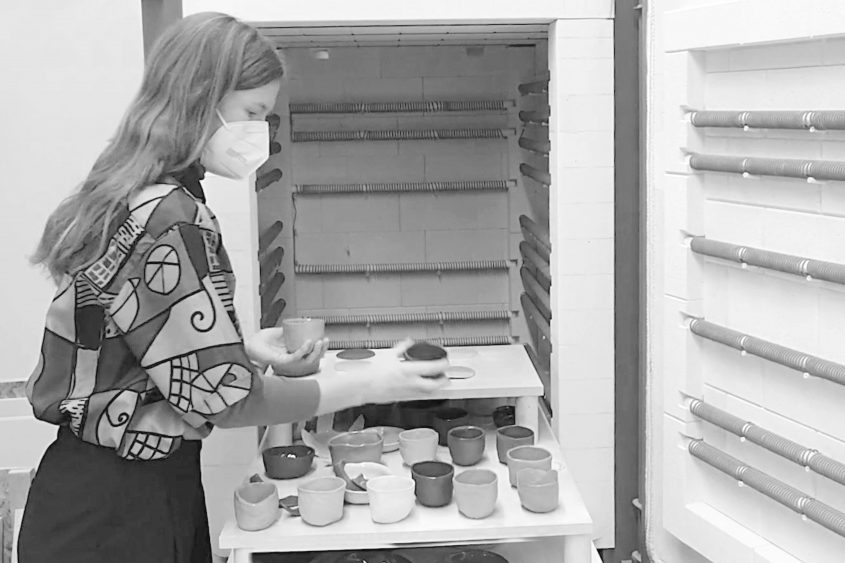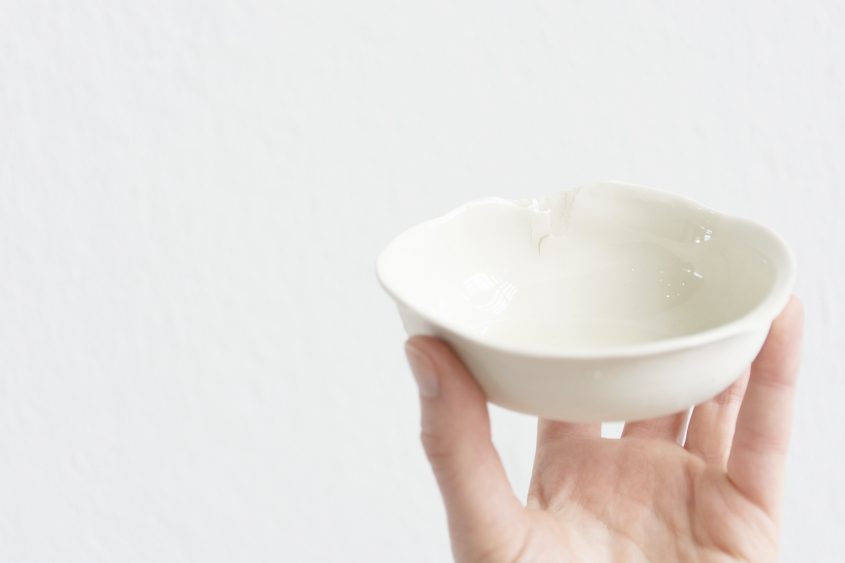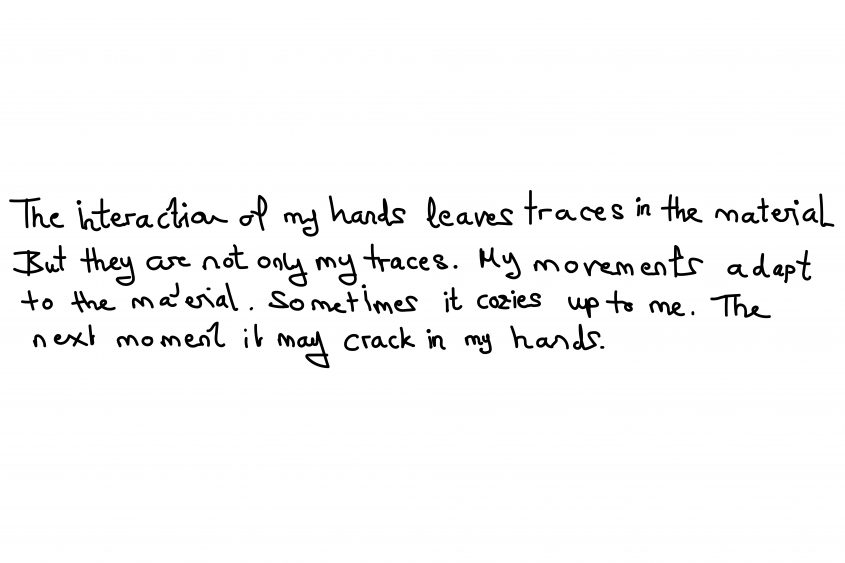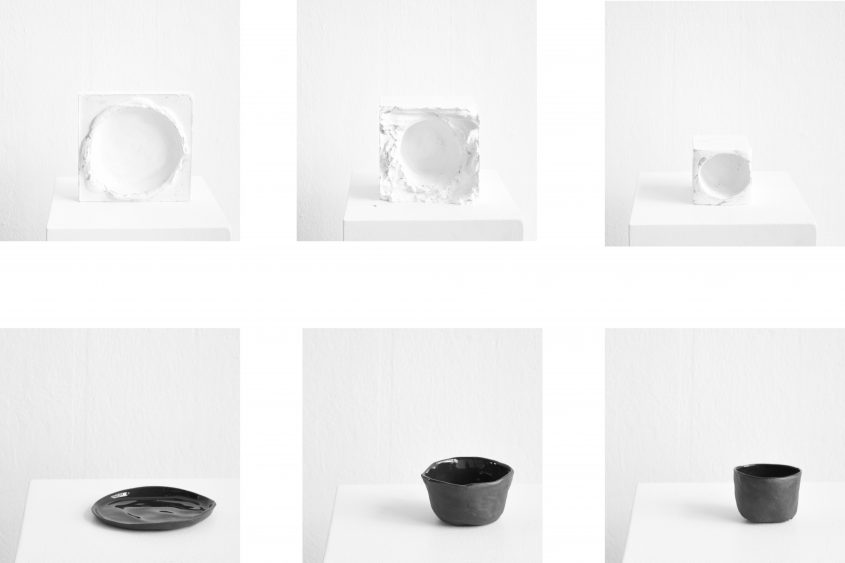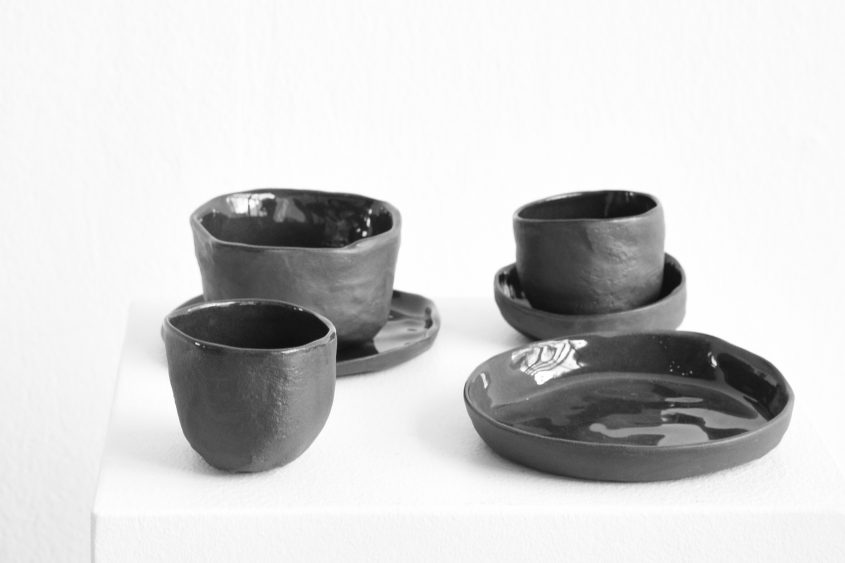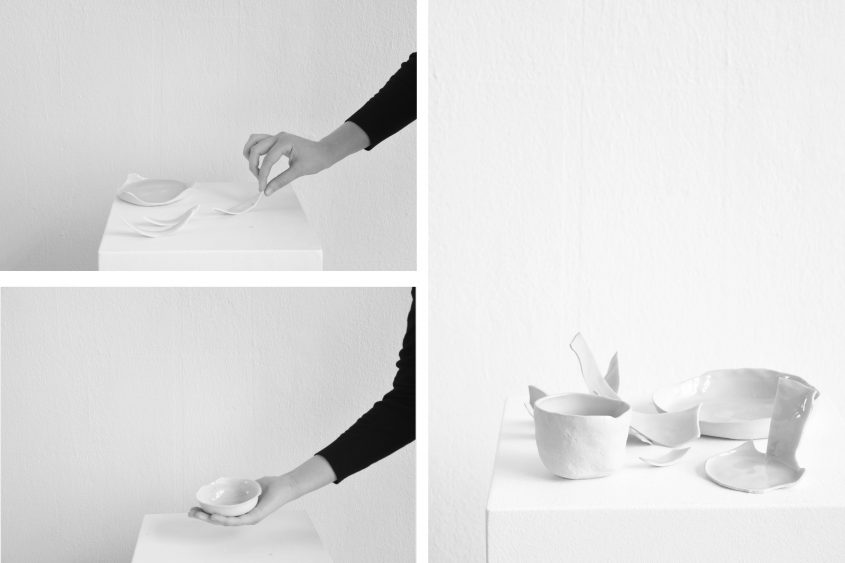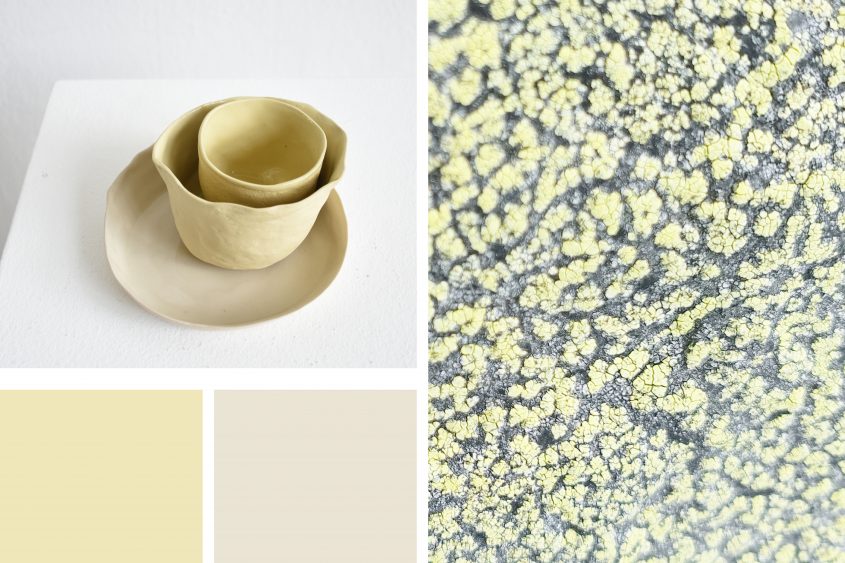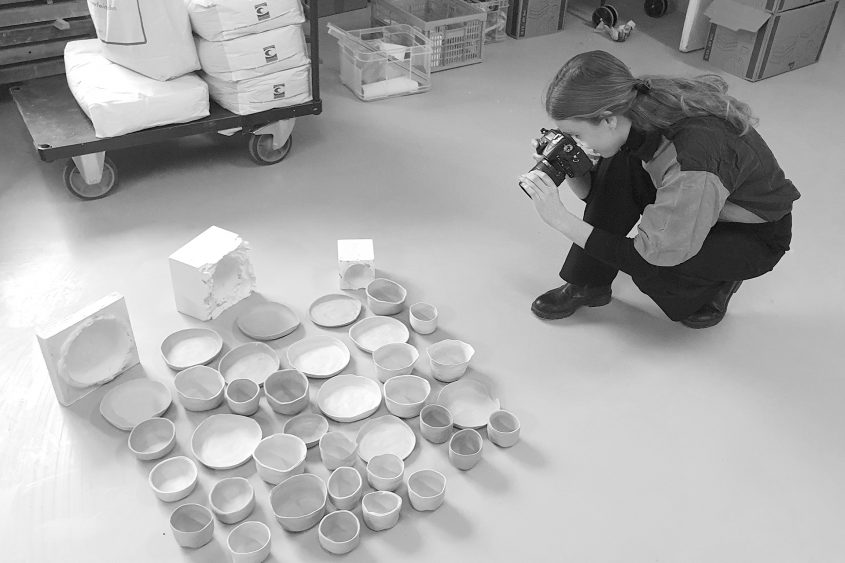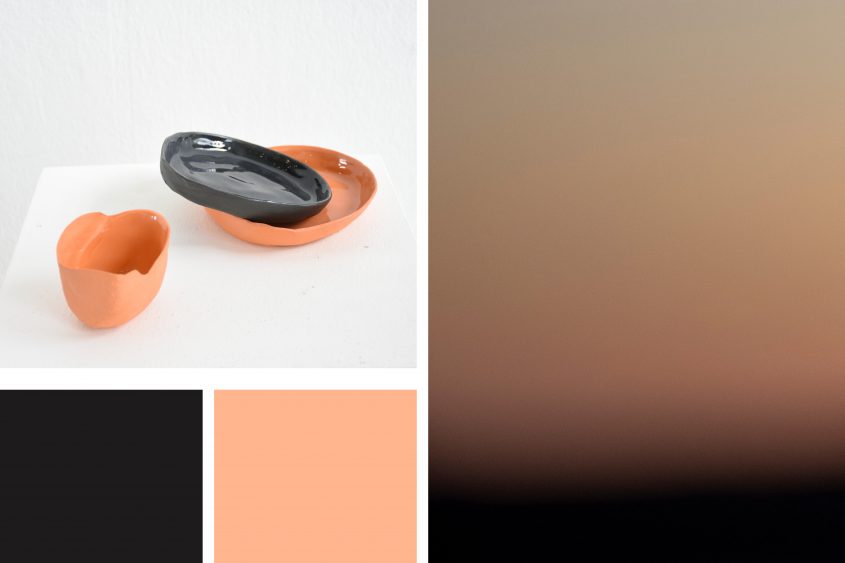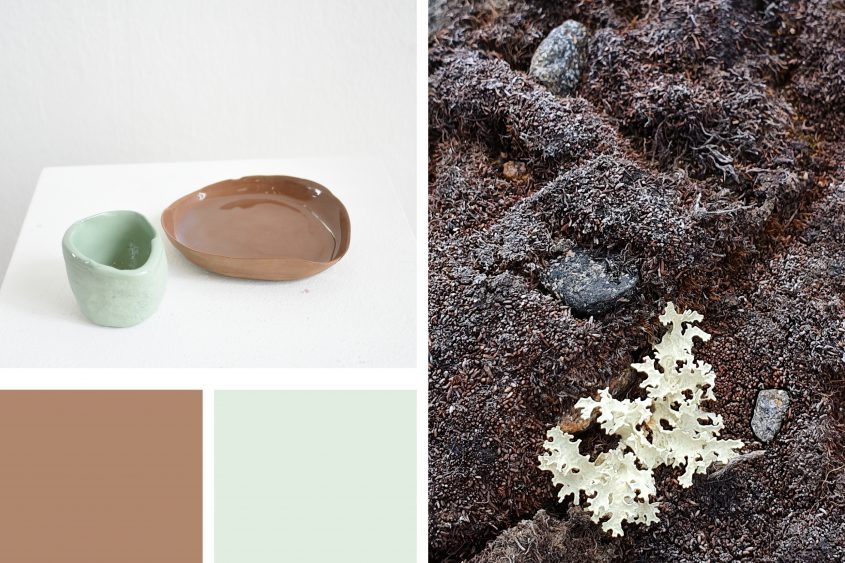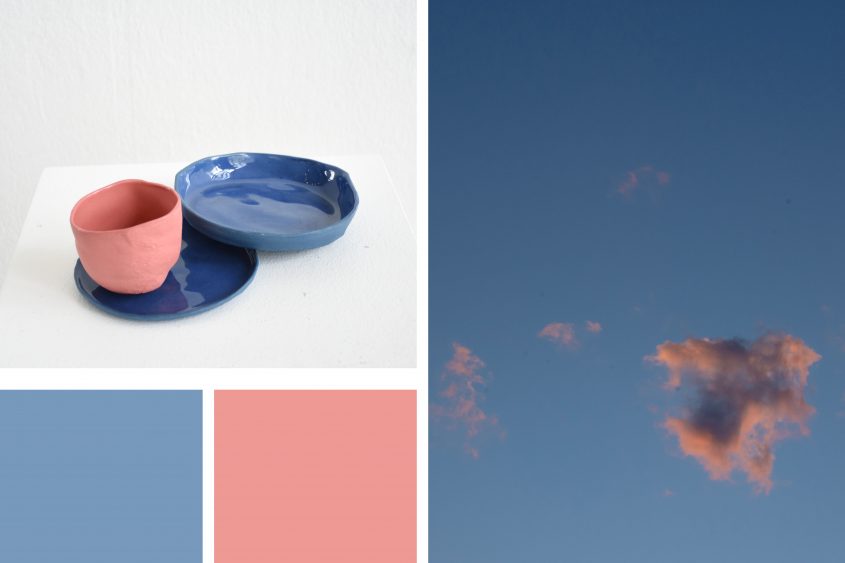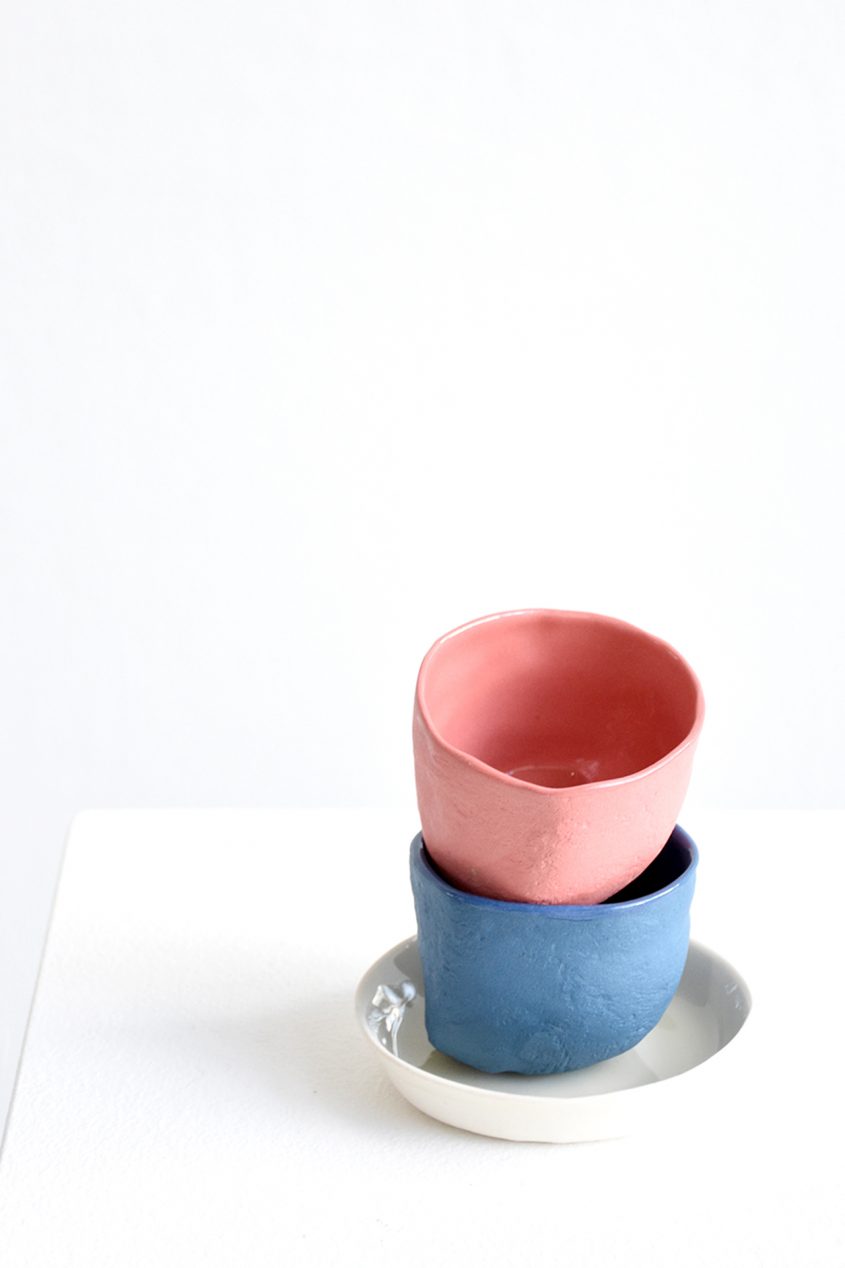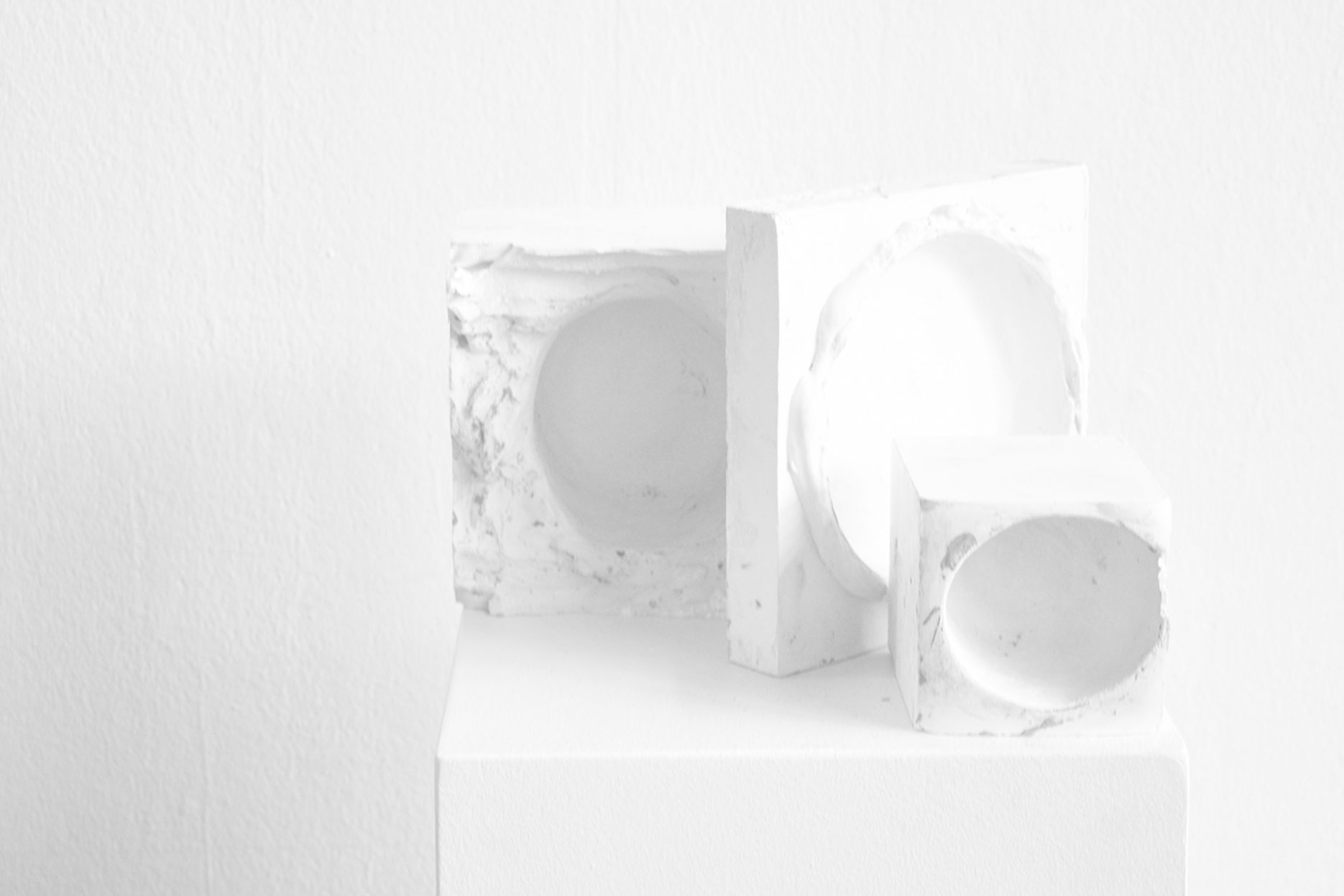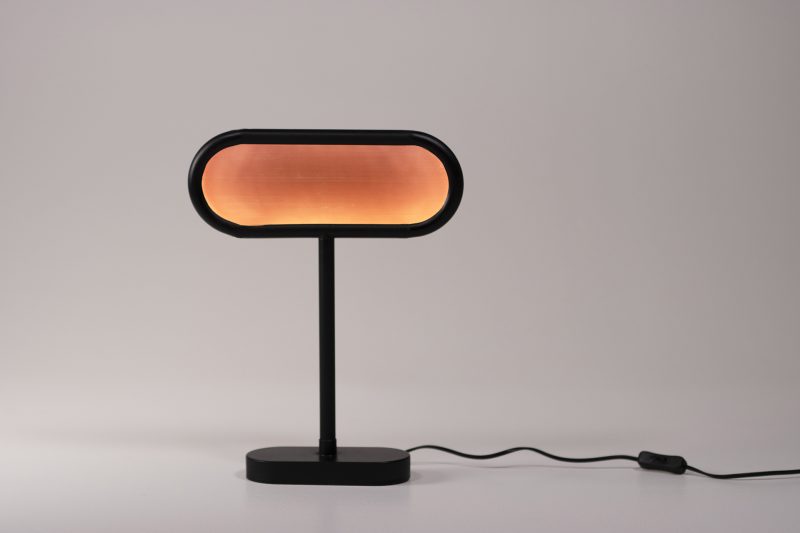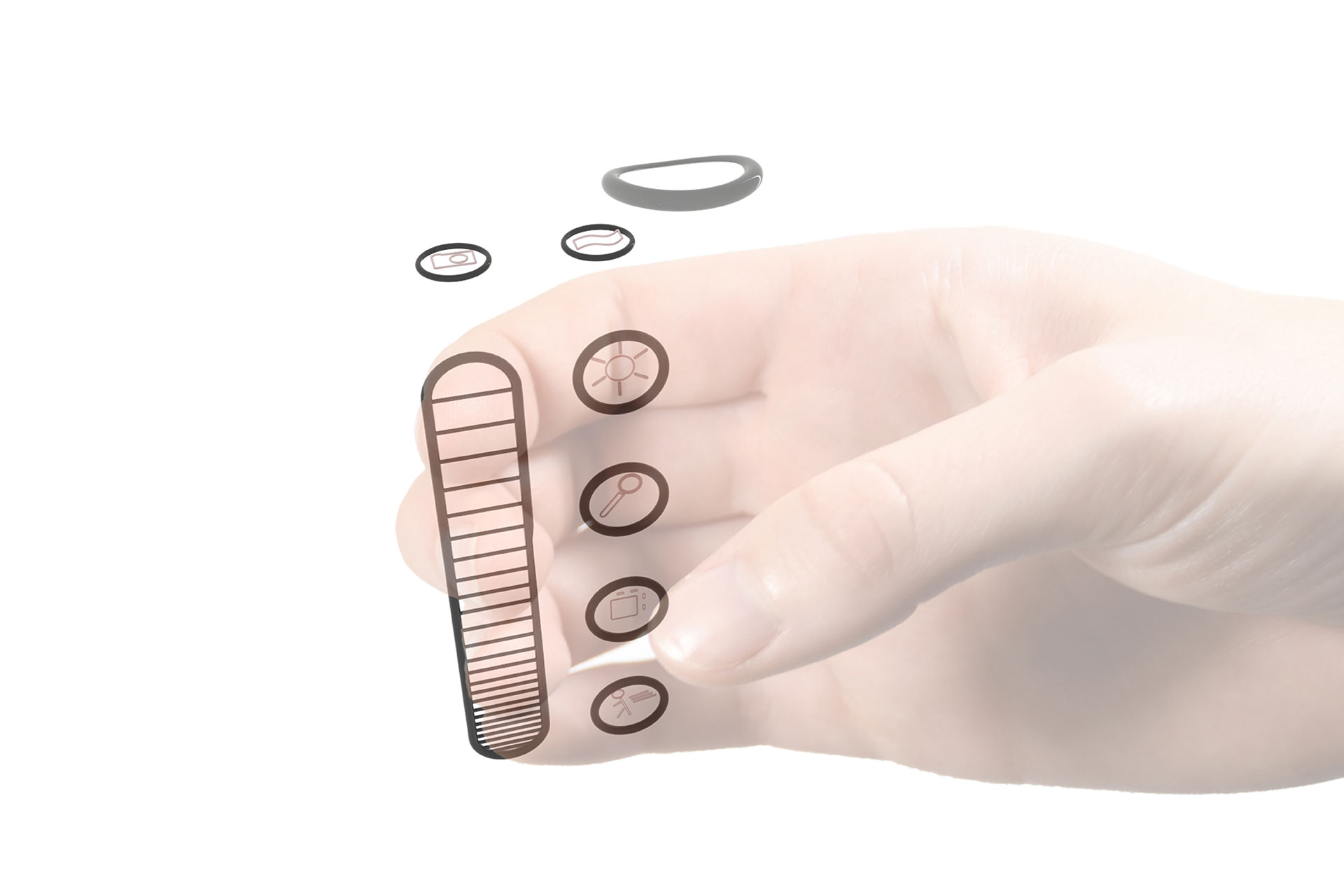Within design practise, materials are taken from the non-human matter world and are transformed into artefacts according to our human needs. These moments of transforming material are the basis for this re-moulding design research project, which focuses on the phenomenon of embodiment, the bodily relation between designer and plaster plus clay within the mould-making and slip-casting practise.
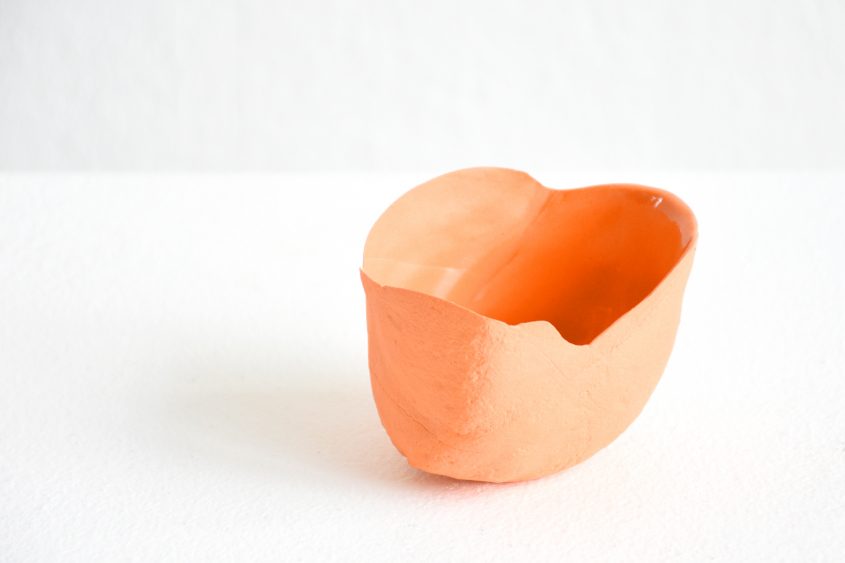
The main motivation for my work as a designer is to understand how and why the world we live in appears as it materializes and to participate in shaping it in an aware way. My main assumption is that artefacts are a direct embodiment of the design practise. It follows that designing gives birth to artefacts. The generation of new artefacts in turn have an impact on the human-made world.
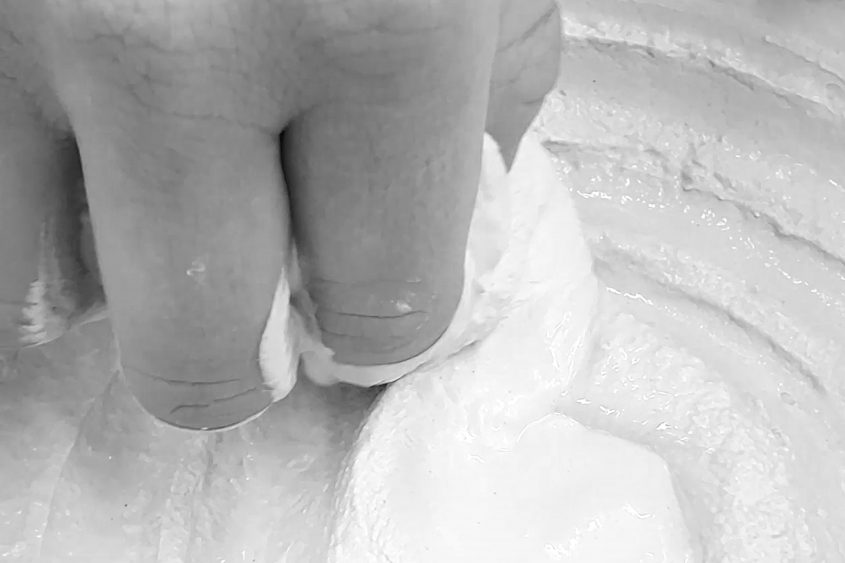
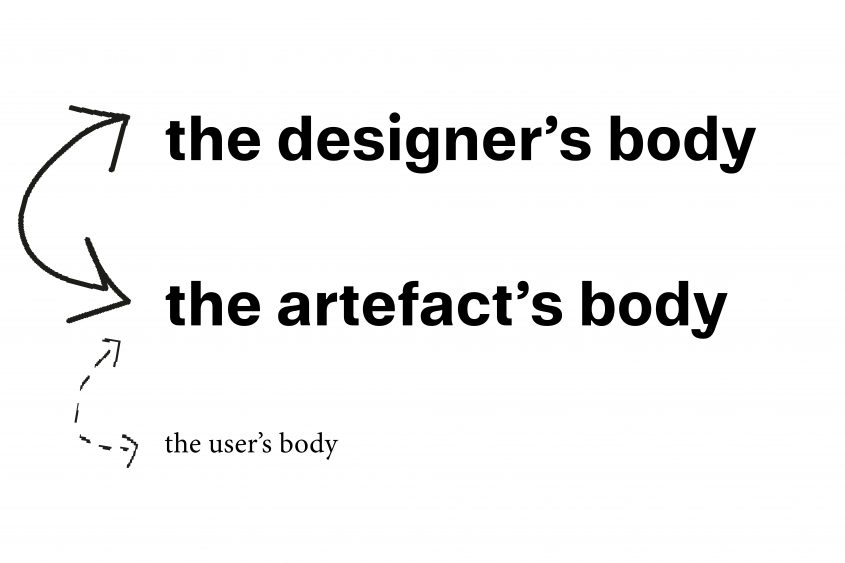
During design practise, numerous moments of embodiment emerge. From the first draft on paper to material exploration, ideas are manifested in artefacts such as drawings and material objects. Besides the expression of an assumption, the physical interaction between designer and material is central to gain new insights into material potentials and further finding possible solutions to given problems. This research-oriented design approaches focus on the mould, representing one of the first humans practises of re-producing products in series production.
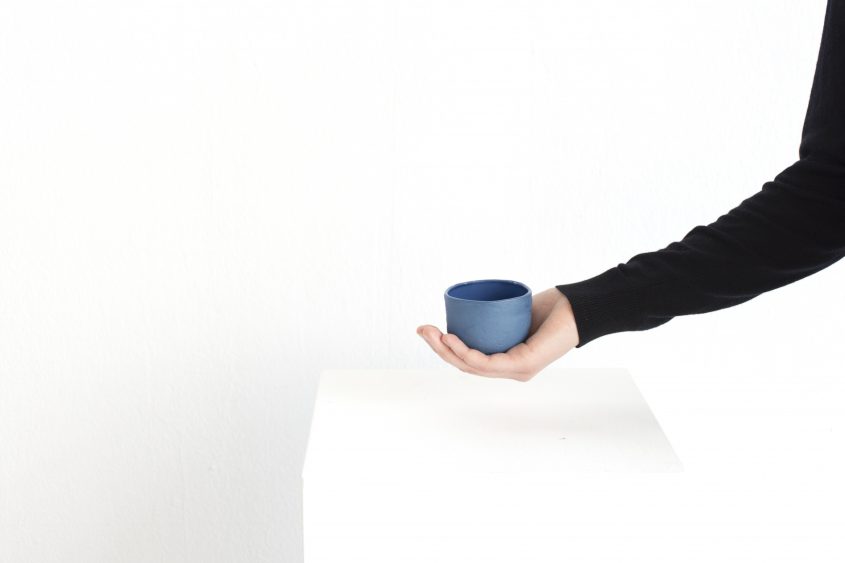
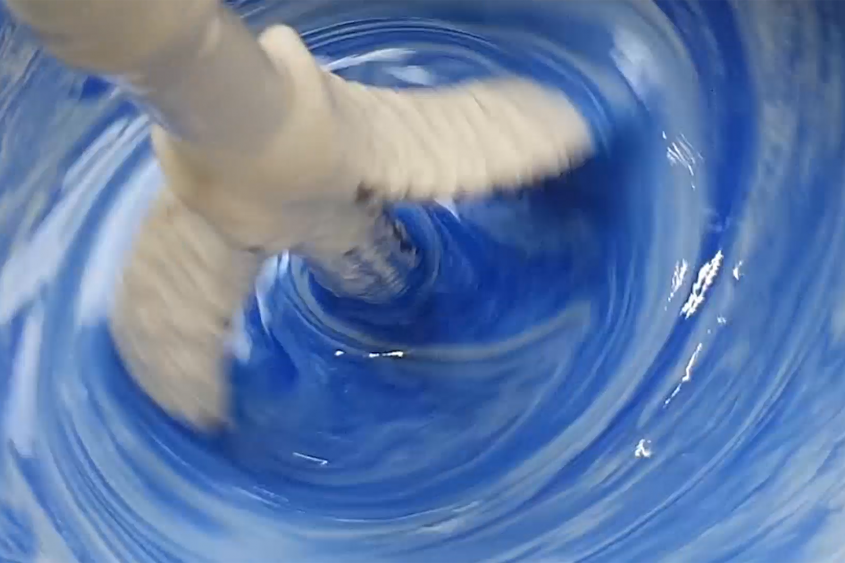
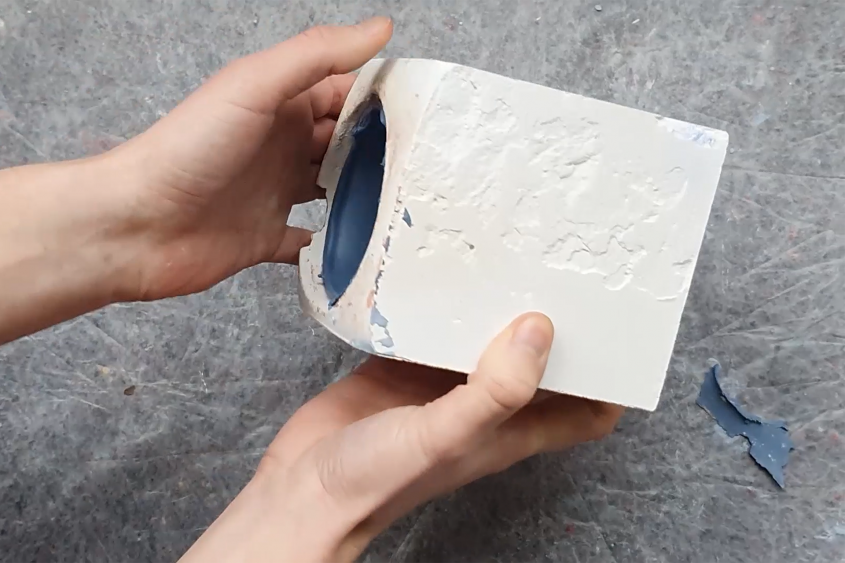

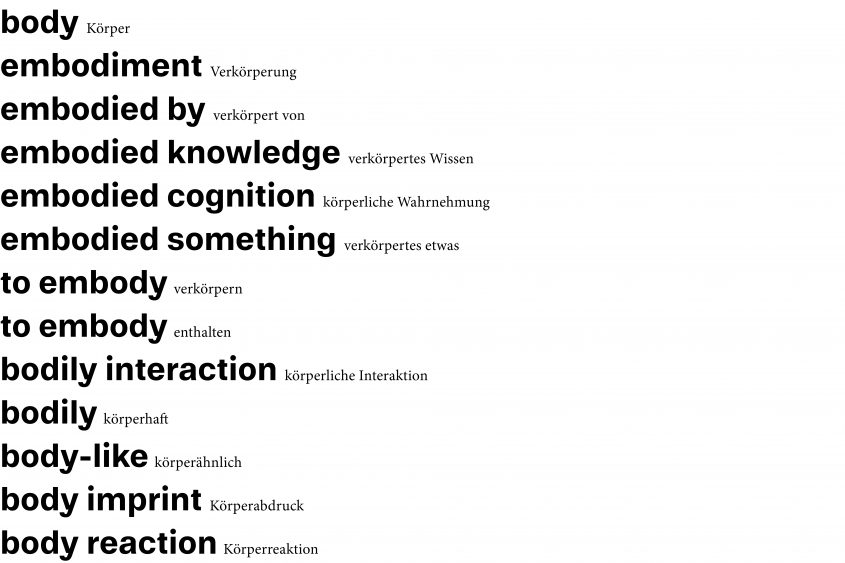
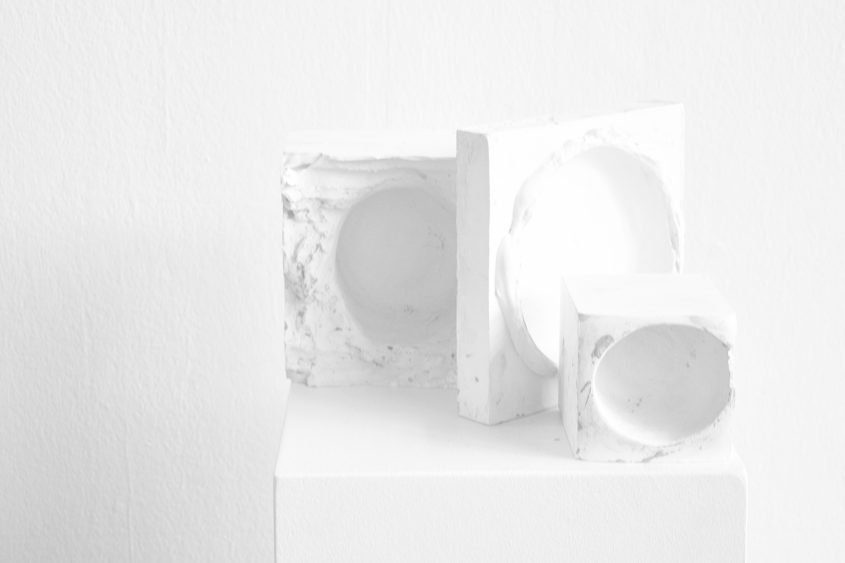
The ceramic investigations deal with the bodily relationship of the designer within the transformation of non-human-owned plaster plus clay into a human-shaped ceramic artefact. The designer’s position throughout this study is that through making in combination with reflective methods new knowledge about the artefact to be designed can be attained. Furthermore, this reflective practice raises awareness of the non-human material agency and the impact of designers re-moulding our all surrounding material world.
